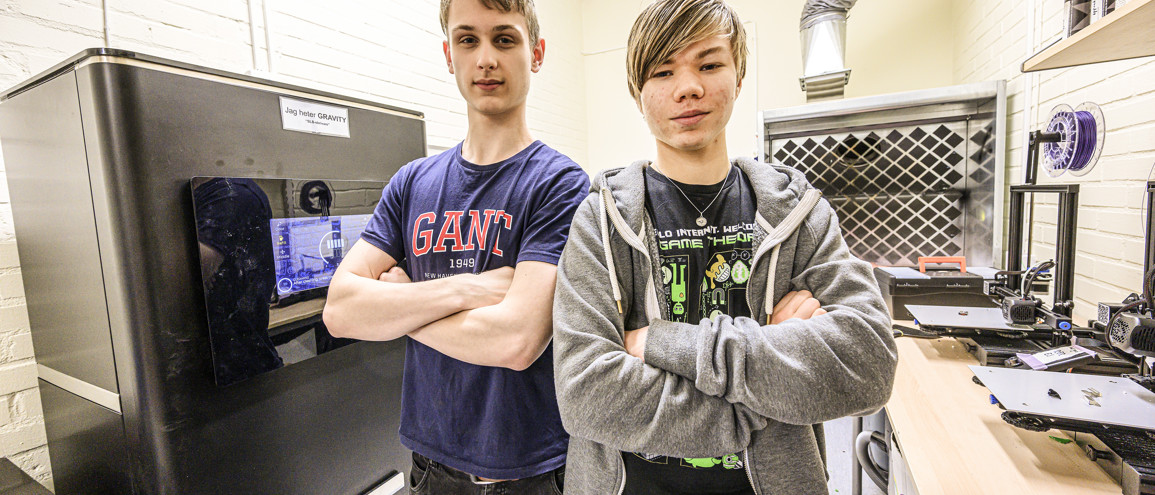State of the art 3D printing – in school
Thanks to a collaboration with the high-tech Linköping company Wematter, students at Berzelius School can use the advanced SLS 3D printer Gravity. "We study design and product development on the Technology Programme and it is incredibly cool that the school is investing in such a high-tech resource," say students Carl Pettersson and Theodor Andersson-Söderlund.
Berzelius school has one of Sweden's most comprehensive technology educations. As a result of the fast growth of the tech industries, a collaboration with Linköping company Wematter was begun in autumn 2021. The purpose is to give Berzelius students an ideal learning experience based on 3D printing.
The ground-breaking 3D printer is a clear example of how Linköping works to keep its education institutions in the forefront.
"We collaborate with various companies and carry out assignments for educational purposes,” says Nils Winge, teacher in computer-aided design, technology and construction. “Several of the students’ prototypes are so good that they could be commercialised. With the Gravity 3D printer, we can create advanced prints that students will benefit greatly from in their future working life.”
It is used by most of the students on the upper secondary school Technology Programme, but above all by those who have specialised in design and product development, production technology, or engineering science.
"The technology of this printer is world-leading and the rental arrangement with Wematter is optimal for the school. It’s also good that we can recycle materials and use bio-based plastic," says Winge.
The students draw the products which are then printed on a scale of 1:1. The machine makes it possible to use materials which are highly elastic and durable.
"They have come up with many smart ideas – such as an unbreakable mobile phone case, a product that keeps self-closing doors open to help the cleaning staff, and a sound-absorbing pad for use in classrooms. You put them on the feet of chairs," says Winge.

Another smart invention by Carl Pettersson – who is studying his second year of design and product development – is a coupling for the school's bicycle trailer.
"I have designed and printed a prototype of a mount for the trolley which is attached to the bike. The teeth in the bracket lock into each other and work on the same principle as handcuffs. It makes it possible to use the trailer for all our bikes, without the need for any tools,” says Carl.
Both he and his classmate Theodor Andersson-Söderlund are very happy with their education.
"It really feels as if the school invests in us and wants to give us the best chance for the future,” smiles Theodor. “The 3D printer is very cool and allows us to create great prototypes," he adds.
